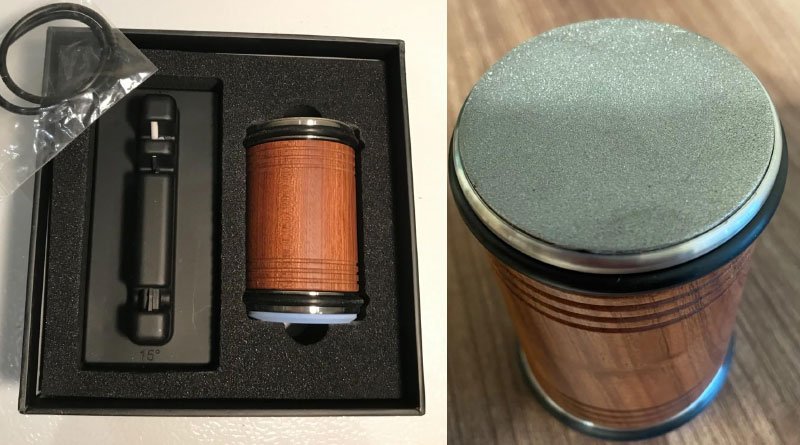How to Polish a Knife Effectively in 10 Easy Steps
Knowing how to polish a knife is a skill worth mastering. In our daily lives, knives are useful tools, and we rely on them for various tasks such as cutting, chopping, and mincing. As we use knives regularly, they tend to dull over time and lose their sharpness. It is important to polish your knife to keep it sharp regularly.
Step-by-Step Guide on How to Polish a Knife
Polishing a knife involves a series of steps that need to be followed carefully for the best results. Here’s a detailed step-by-step guide:
Step 1: Safety First
Before you begin, ensure you’re wearing safety gloves and working in a well-lit environment. The gloves will protect your hands from any accidental cuts, while good lighting will allow you to see what you’re doing clearly.
Step 2: Preparing the Knife
First, ensure your knife is clean and dry. Any dirt or moisture could interfere with the polishing process.
Step 3: Clean the Blade
Start by cleaning the blade thoroughly. Use warm water, mild dish soap, and a soft cloth to remove any dirt or gunk. Ensure thorough drying before moving on to the subsequent step.
Step 4: Secure the Knife
Using a bench vice, secure the knife so that it doesn’t move during the polishing process. Ensure the blade is facing away from you to avoid any accidents.
Step 5: Start with Coarse Grit Sandpaper
Begin the polishing process with a coarse grit sandpaper (around 400-600 grit). It will help remove any major imperfections on the blade. Rub the sandpaper against the blade in a circular motion, ensuring even pressure throughout.
Step 6: Gradually Move to Finer Grits
Once you’ve removed the major imperfections, switch to a finer grit sandpaper (800-1000 grit) and repeat the process. Using this method will help smooth out the blade’s surface even more.
Step 7: Apply Polishing Compound
Now, apply a layer of polishing compound to the blade. Using a soft cloth or a buffing wheel, rub the compound into the blade in a circular motion. It will give the blade a nice shine.
Step 8: Buff the Blade
Finally, using a clean, soft cloth, buff the blade to remove any remaining compound and reveal the high shine. If necessary, you can repeat steps 6 and 7 until you achieve the desired level of shine.
Step 9: Clean and Store the Knife
Once you’re satisfied with the shine, clean the knife once again to remove any remaining compound or dust. To prevent rusting, ensure that it is stored in a dry location.
Step 10: Common Mistakes in Knife Polishing
Avoid over-polishing your knife, as it could thin the blade. Also, remember not to press too hard while polishing to avoid altering the blade’s shape.
Polishing a knife is a meticulous process that requires patience and care. But with practice, you’ll be able to achieve a mirror-like shine on your knives.
Materials Needed for Knife Polishing
Polishing a knife involves a series of steps and requires specific materials for the best results. You might need the following materials:
Abrasives: These are used for cleaning, polishing, and finishing blades. The type of abrasive used can vary based on the metal that is being polished.
Buffing Compounds: Knife buffing compounds are mixtures of various chemicals typically used for finishing cutting tool parts. They help in achieving a mirror finish.
Polishing Wheels: Certain wheels are used for specific tasks based on the metal that is being polished.
Cleaning Supplies: Clean cuts are necessary when slicing more delicate food, such as fish and ripe tomatoes. Therefore, thorough cleaning to remove any product or dust from the blade is essential.
Bench Vice: A bench vice can be helpful to hold the knife during the polishing process securely.
Knife Sharpening Tools: While not directly involved in polishing, sharpening tools can come in handy to maintain the edge of the knife.
Safety Equipment: Since polishing knives involves handling sharp objects, it’s important to use safety equipment like gloves and eye protection to prevent injuries.
The tools and materials used can differ based on personal preference and the type of knife being polished. To ensure accident prevention, it is imperative to consistently adhere to safety guidelines.
 Why do you have to cook indoors all the time?
Why do you have to cook indoors all the time?The best portable griddles offer a convenient and efficient way to cook delicious meals on the go. With features like adjustable heat control, non-stick surfaces, and easy cleanup.
How to Mirror Polish A Knife By Hand?
To mirror polish a knife by hand, you’ll need to follow these steps:
Preparation: First, you need to wash the knife clean. Grab a bowl and carefully pour 6-8 cups of water into it. Next, introduce 1 teaspoon of liquid dishwashing soap. As a result, the blade will be cleaner to work with, and you won’t have any dirt clogging it up.
Sanding: Start sanding the knife using 120-grit sandpaper.When polishing, you should alternate parallel and perpendicular strokes in order to remove scratches left by the previous grit. Gradually increase the grit number (from 120 to 1000 or more) to refine the surface of the blade.
Polishing: After sanding, apply a metal polish like Mother’s metal polish. You can do this all by hand. Alternatively, some people recommend using white rouge on a loose muslin wheel to create a mirror finish.
Buffing: Try to buff a couple of times early in the sanding process. It will be easier to see scratches that weren’t removed by the previous grit if you do this.
Cleaning: Finally, wipe down the knife with a clean, dry cloth to remove any compound residue.
Achieving a mirror finish requires patience and careful attention to detail. Each step in the process builds upon the last, so it’s important not to rush through any part of it.
Why Polishing a Knife is Important
When it comes to maintaining your knife polishing is not just about aesthetics; it plays a critical role in enhancing the knife’s performance and longevity. So what makes it so essential?
Firstly, polishing a knife improves its cutting performance. By polishing the edge of the blade with high-grit stones, you can achieve a consistent and sharper edge with reduced drag. Cutting becomes easier and more efficient, making culinary and outdoor adventures more enjoyable.
Secondly, a polished knife has increased resistance to corrosion. The process of polishing forms a protective barrier that shields the blade from environmental elements, thus preventing rust and corrosion. In turn, this contributes to the blade’s longer lifespan.
Thirdly, polishing helps to maintain the knife’s shape. Proper polishing can help achieve a more accurate blade shape, which is crucial for precise cuts and overall performance.
Lastly, a well-polished knife is pleasing to the eye. A mirror-polished edge can significantly increase the aesthetic value of your knives. So, if you’re looking to enhance your kitchen tools or your knife collection, polishing can make a significant difference.
Polishing your knife is an essential maintenance task that enhances cutting efficiency, prolongs blade life, maintains blade shape, and boosts aesthetic appeal. So, next time you use your knife, remember that a little polish can go a long way!
 How about cooking healthier meals with an air fryer grill combo?
How about cooking healthier meals with an air fryer grill combo?the best air fryer grill combo is a game-changer for anyone who loves delicious, crispy food without the guilt.
How to clean and polish a knife?
Cleaning and polishing a knife involves:
- Cleanse the blade by eliminating any dirt or grime.
- Utilize sandpaper to effectively eliminate any imperfections and achieve a smooth surface.
- Applying a polishing compound.
- Buffing the blade for a high shine.
All these steps are discussed in detail above. Remember to always clean and store your knife in a dry place to prevent rusting.
Final Verdict
Polishing a knife to achieve a mirror finish is not an easy task and requires patience, attention to detail, and the right tools. With the steps outlined above and some practice, you’ll be able to achieve a shiny, mirror-like finish on your knives at home. Remember always to clean and properly store your knives after polishing them to maintain their shine for longer periods.
FAQs of Polishing a knife
Can I use a machine to polish my knife?
Yes, but manual polishing allows for more control.
How often should I polish my knife?
This depends on how frequently you use your knife. A general rule is to polish it whenever you notice it starting to dull.
How to polish a pocket knife?
The same steps can be followed to polish a pocket knife. Just make sure to secure the blade in place using a vice or clamp to prevent any accidents. Additionally, take extra care when polishing around the hinges and joints of the knife.
How to polish a stainless steel knife?
Stainless steel knives can be polished using the same steps as described above. Just make sure to use appropriate grit sandpaper and a metal cleaning solution suitable for stainless steel to achieve the best results.
You may need to apply more pressure while sanding, as stainless steel is harder than regular steel. Always finish with a buffing cloth or wheel for a shiny finish. Overall, polishing a stainless steel knife requires the same techniques and patience as any other type of knife.






